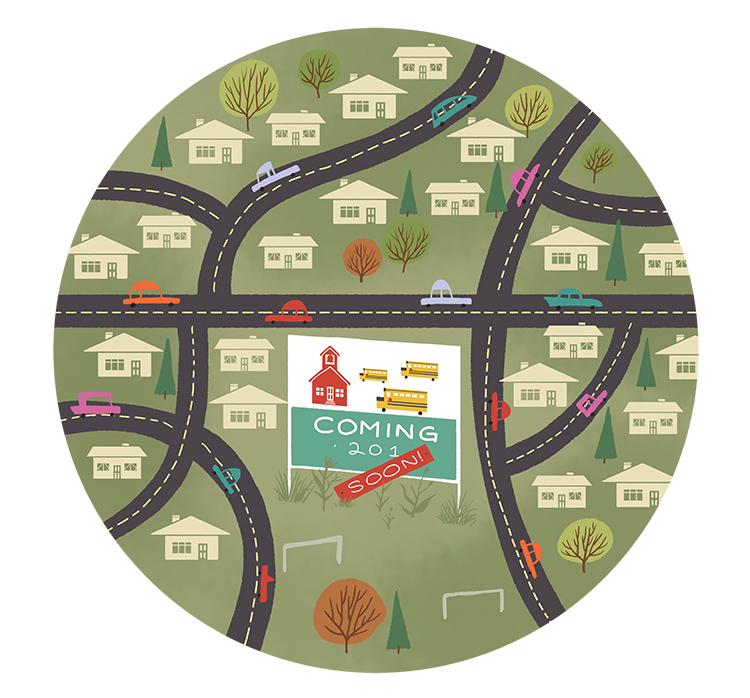Residential land developers build neighbourhoods to sell them, plain and simple. They aim to provide you with a diverse set of amenities, services and housing options. They want to wow you with curb appeal and dazzle you with character. By building beautifully elaborate urban landscapes they intend on capturing your attention, your heart and, eventually, your money.
“A lot of people think that it’s the city that’s paying for all these new streets and new neighbourhoods and that the developers are getting off scot-free,” says Brad Armstrong, vice president of community development for Qualico Communities. “We make an investment, we do the financing, we roll up all those costs, take out a small markup, and then we sell it to new-home-builders, who in turn, sell it to home buyers. That’s how we make our money.”
Armstrong says his company is building more than just houses; its role as a developer is to provide buyers with economically, social and environmentally sustainable homes they can comfortably afford.
Roads are smoothed, homes are planted and a community blossoms. From roads and sidewalks to fields and trees, developers build communities acre by acre and sell them as complete packages. According to Armstrong, you’re not just buying a home anymore; you’re buying an entire neighbourhood.
And while these neighbourhoods are largely developed when you move in, there’s always a section of land known as the Municipal Federal Reserve, a.k.a. “that field that’s been sitting empty since we moved in.”
According to the Municipal Government Act, every developer of a new community must set aside up to 10 per cent of the land for the future development of schools, recreation centres and playgrounds. After the land is set aside, it’s left to the government to fund all infrastructure costs for the development of the amenities needed in that space.
Provincial and municipal taxes pay for our schools and recreation centres. In a report issued in 2010, the Alberta School Boards Association says these amenities are often left to the end of the new development projects, forcing government to shell out full costs for the creation of new facilities, while struggling to keep up with the costs of maintaining existing ones.
